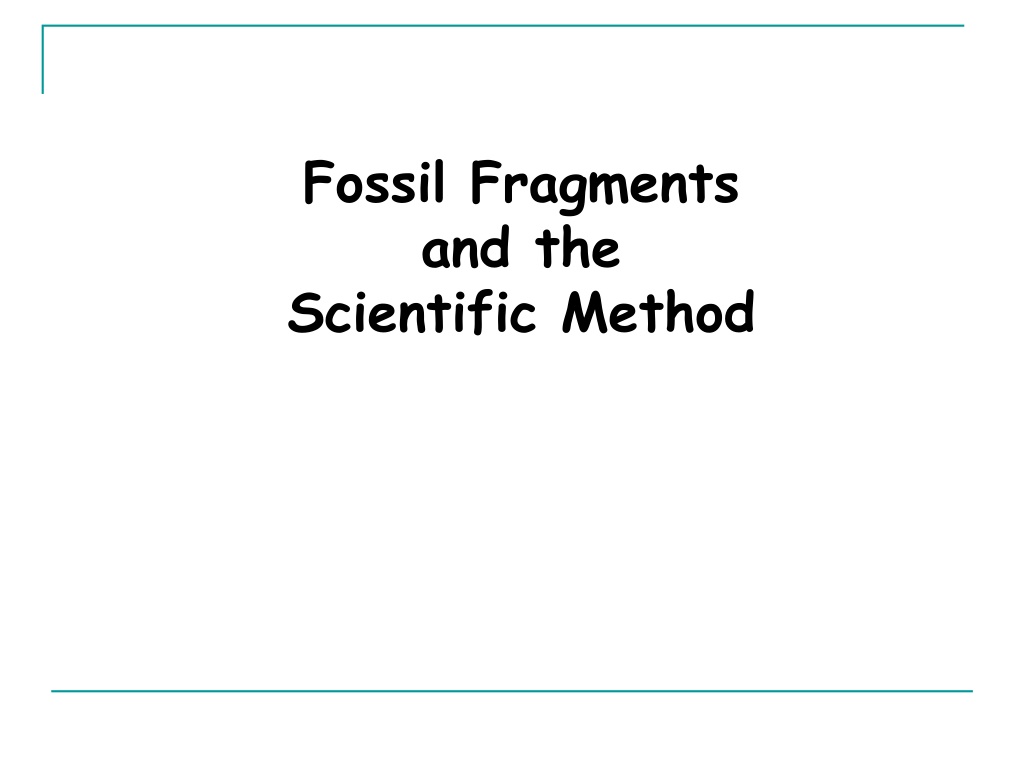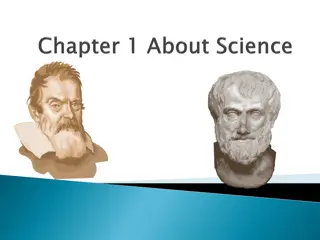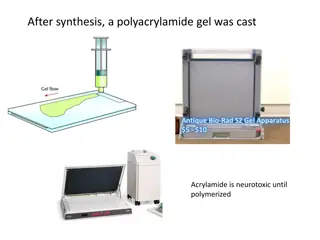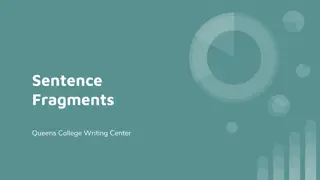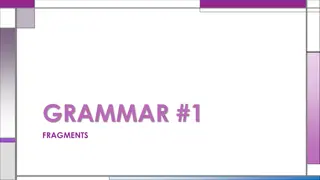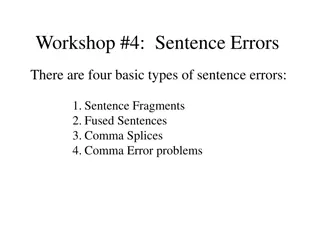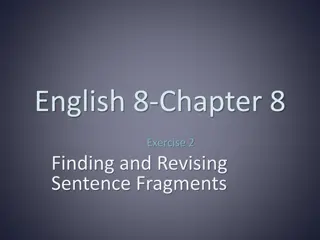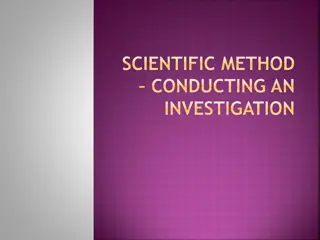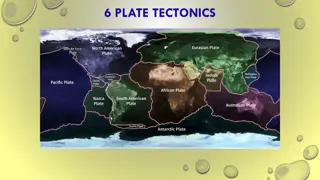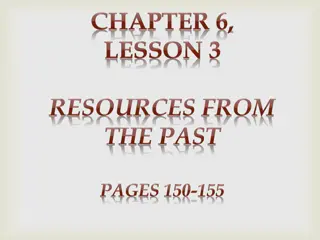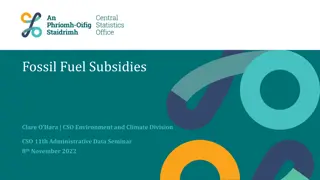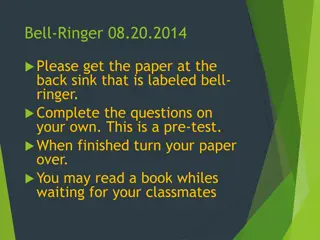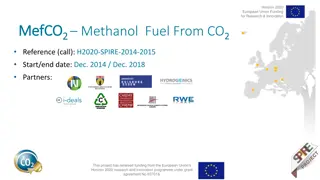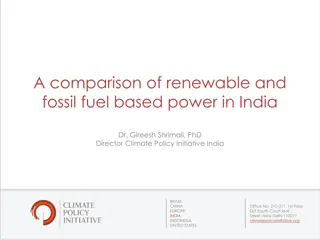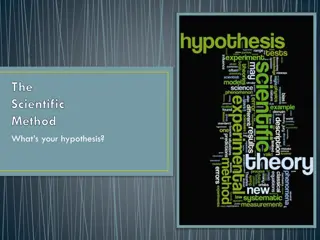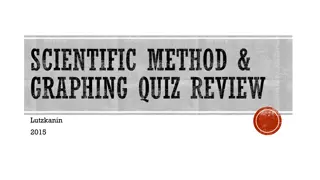Understanding the Scientific Method Through Fossil Fragments
Exploring the scientific method through the study of fossil fragments involves careful observation, sketching, and inference-making to understand past organisms and habitats. The steps of the scientific method, such as asking questions, conducting experiments, and drawing conclusions, are integral to this process. By following these steps and sharing observations, participants can experience a hands-on approach to scientific inquiry akin to the work of paleontologists.
Download Presentation

Please find below an Image/Link to download the presentation.
The content on the website is provided AS IS for your information and personal use only. It may not be sold, licensed, or shared on other websites without obtaining consent from the author. Download presentation by click this link. If you encounter any issues during the download, it is possible that the publisher has removed the file from their server.
E N D
Presentation Transcript
Fossil Fragments and the Scientific Method
Science as A Way of Knowing Mathematics Science Religion Art Goal What counts as evidence? Appropriate Questions
Science as A Way of Knowing Mathematics Science Religion Art Understand reality through the investigation of natural phenomena Goal What counts as evidence? Appropriate Questions
What method(s) do scientists use to obtain this goal(s)?
Scientific Method The scientific method is the best way yet discovered for winnowing the truth from lies and delusion.
Scientific Method The scientific method is the best way yet discovered for winnowing the truth from lies and delusion. The scientific method is a way to ask and answer scientific questions by doing experiments. The steps of the scientific method are ?
Scientific Method The steps of the scientific method: 1. Ask a Question 2. Do Background Research 3. Construct a Hypothesis 4. Test Your Hypothesis by Doing an Experiment 5. Analyze Your Data and Draw a Conclusion 6. Communicate Your Results
Fossil Fragments (~20 min) Make careful observations of fossil fragment 2. Sketch your fossil fragments Use only 1 color & sketch near middle of the page May make sketch larger than fossil to show more detail Save room for more sketching around fossil Include scale (1x=life size, 2x=twice life size) 3. Infer the rest of the organism and its habitat Use different color to sketch your inferences Have reasons to justify your inference. 1.
Groups Share Observations/Inferences
Fossil Fragments: Final Questions How is this activity similar to what paleontologists do? How is it different from what paleontologists do? Would paleontologists reach the same conclusions about the identity of the organisms and their environments as the class did?
Unicorn constructed from fossil fragment Extraordinary claims require extraordinary evidence. Carl Sagan
Fossil Fragments: Final Questions Is this science?
Fossil Fragments: Final Questions Did we follow the scientific method? See next slide for a reminder of the steps
Scientific Method The steps of the scientific method: 1. Ask a Question 2. Do Background Research 3. Construct a Hypothesis 4. Test Your Hypothesis by Doing an Experiment Experiment:A test under controlled conditions, changing only one variable at a time and keeping the other relevant variables constant 5. Analyze Your Data and Draw a Conclusion 6. Communicate Your Results
Fossil Fragments: Final Questions What did you notice about the steps we used in this activity?
Fossil Fragments: Final Questions Do scientists always follow the scientific method?
Fossil Fragments: Final Questions Is it correct to refer to THE scientific method? Why or why not?
3-Aspects of Science Science Science Processes Processes Scientific Scientific Knowledge Knowledge Nature of Nature of Science Science
End-of-Class Discussion What are some characteristics of science (or nature of science tenets)?
End-of-Class Discussion What are some characteristics of science (or nature of science tenets)? Scientific knowledge: is based on evidence can change with the addition of more data is made up of both observation & inference Science is done through MANY methods All aspects of science are creative Science is impacted by prior knowledge, experiences
End-of-Class Discussion What are some characteristics of science (or nature of science tenets)? Scientists sometimes cannot directly observe what they want to know There is no single scientific method that all scientists follow
In 1892, Joseph Whiteaves found one of the feeding appendages and classified it as the tail of a lobster or shrimp. Charles Walcott found the mouthpart in the Burgess Shale and classified it as a jellyfish. Body was discovered separately and classified as a sponge by Simon Morris. The mouthpart was found with the body, but was classified as an unrelated jellyfish that happened to be preserved at the same time.
Harry Whittington uncovered more stone and found that the feeding appendages were connected to the mouth parts. It took several more years before the juxtaposition of mounth, feeding arms, and body were realized to be a single organism in 1985.
